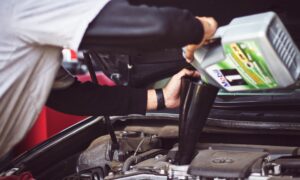Do you believe that oil changes are a waste of money because your cousin’s friend’s neighbor said so? Or perhaps you think that maintaining your vehicle regularly is just a scheme concocted by greedy mechanics to drain your wallet. Well, hold on tight and buckle up, because today we’re diving deep into the world of automobile maintenance myths! In this blog post, we’ll be separating facts from fiction and debunking some long-standing misconceptions about car care. So rev up your engines and join us as we take off on an incredible journey to demystify the truths behind keeping our beloved automobiles running smoothly.
Introduction to Automobile Maintenance
Automobile maintenance is vital to keeping your car running properly and avoiding costly repairs. However, there are many myths about auto maintenance that can lead people to believe they are doing more harm than good. In this section, we will debunk some of the most common myths about car care so that you can separate fact from fiction.
One of the most common myths is that you should change your oil every 3,000 miles or every 3 months, whichever comes first. However, most modern cars can actually go much longer between oil changes. Consult your owner’s manual to see what is recommended for your car.
Another myth is that you should flush your engine every 30,000 miles. This is not necessary and can actually be harmful to your engine. Engine flushes can remove important lubricants from your engine and should only be performed if recommended by a mechanic.
You may have also heard that you should only use premium gasoline in your car. This is not true! Unless specified in your owner’s manual, you can use any type of gasoline without damaging your car. In fact, using premium gasoline when it’s not required can actually hurt your wallet without providing any benefits to your car.
Many people believe that they need to wax their car monthly in order to protect the paint job. However, this isn’t necessarily true either. If you wash and dry your car regularly, you shouldn’t need to wax more than twice a year.
Lastly, you may have heard that it’s better to get your car serviced at the dealership. While the dealership can certainly provide excellent service, you don’t have to take your car there for regular maintenance. There are many qualified mechanics outside the dealership who can perform maintenance tasks just as well.
By separating fact from fiction, you can ensure that your car is in good condition and running properly without falling victim to these common myths about auto maintenance.
Common Misconceptions About Automobile Maintenance
There are many myths and misconceptions about automobile maintenance. Here are some common ones:
1. You don’t need to change your oil often.
Wrong! Changing your oil is one of the most important things you can do to maintain your car. Depending on your driving habits, you should change your oil every 3,000 to 5,000 miles.
2. You don’t need to worry about maintenance until something goes wrong with your car.
Wrong again! Regular maintenance is crucial to keeping your car running properly and preventing expensive repairs down the road. It’s best to stay on top of things by following your car’s recommended maintenance schedule.
3. All motor oils are the same.
Nope! There are different types of motor oil, and you should use the type that’s recommended for your car. Consult your owner’s manual or a qualified mechanic if you’re not sure which type to use.
4. Synthetic oil is always better than regular oil.
This one isn’t necessarily true. Synthetic oil may be better for some cars, but not all cars require it. Again, consult your owner’s manual or a qualified mechanic to be sure.
5. Regular maintenance is cheaper than repairs . This one is definitely true!By catching problems early and taking care of them before they turn into big issues , you can save yourself a lot of money in the long run
What You Need to Know About Tire and Wheel Maintenance
Tires are one of the most important parts of your vehicle, and yet they are often neglected. Proper tire maintenance is essential to keeping your car running safely and smoothly. Here are some myths about tire maintenance that you should know about:
Myth #1: You don’t need to worry about tire pressure unless you get a flat tire.
Fact: It’s actually best to check your tire pressure regularly, even if you don’t have a flat. Underinflated tires can lead to decreased fuel efficiency and premature wear, while overinflated tires can be more susceptible to blowouts. Regularly check your owner’s manual to see what the recommended PSI (pounds per square inch) is for your tires.
Myth #2: The “penny test” is a good way to check if your treads are worn down.
Fact: The “penny test” is actually not an accurate measure of tread depth. A better way to check is by using a tread depth gauge, which you can find at most auto parts stores. You should also be on the lookout for any visible signs of wear, such as cracks or bald spots.
Myth #3:You don’t need to rotate your tires unless you’re experiencing problems with handling.
Fact: While uneven tire wear can be a sign that your tires need to be rotated, it’s actually best to do it preventatively. Rotating your tires helps ensure even wear, which can help them last longer and improve your vehicle’s handling. It’s usually recommended to rotate your tires every 5,000 miles or so.
Myth #4:You don’t need to do anything special when winter comes around.
Fact: Winter weather can be hard on your tires, so it’s important to take some extra steps to protect them during this time of year. Making sure that your tires are properly inflated and have enough tread is essential. You may also want to consider investing in a good set of snow tires for extra traction in icy conditions.
Oil and Fluid Changes to Keep Your Car in Good Shape
It is often said that you should change your car’s oil every 3,000 miles or every three months, whichever comes first. However, this is one of the many myths about car maintenance that circulate. The truth is, most cars these days only require an oil change once every 5,000 miles or so. Check your owner’s manual to be sure.
Failing to change your oil regularly enough can damage your engine and lead to costly repairs down the road. Old, dirty oil can’t lubricate your engine parts as well as fresh oil can, leading to increased wear and tear. Change your car’s oil and filter according to the schedule in your owner’s manual, and keep track of mileage or time so you don’t lose track.
In addition to changing your car’s oil on a regular basis, it’s also important to check and top off other fluids as needed. These include coolant, brake fluid, power steering fluid, transmission fluid and windshield wiper fluid. Checking these fluids regularly can help prevent big problems later on. For example, if you let your coolant get too low, it could cause your engine to overheat; if you let your brake fluid get too low, it could result in reduced braking ability or even complete failure. Again, refer to your owner’s manual for specific schedules and requirements for checking and topping off fluids.
Ignoring Regular Checkups Will Cost You Money and Safety
It’s a common misconception that skipping regular checkups will save you money. In reality, ignoring your car’s maintenance needs can have serious consequences down the road. Not only will you end up paying more for repairs, but you could also put yourself and your passengers at risk.
Here are a few examples of why regular checkups are so important:
1. Worn Brakes: If your brakes are worn, it will take longer to stop your car. This could lead to an accident, and you could be held liable if someone is injured.
2. Low Tire Pressure: Driving on underinflated tires can reduce fuel efficiency and cause premature wear. It can also be dangerous; a blowout could cause you to lose control of your vehicle.
3. Dirty Oil: Your car’s oil needs to be changed regularly in order to keep the engine functioning properly. Dirty oil can cause excessive wear and tear, leading to costly repairs down the road.
4. Faulty Lights: When lights are burned out or malfunctioning, they affect your visibility and could result in an accident. Additionally, driving with faulty lights is usually against the law.
5 . Poor Alignment: Unaligned wheels can lead to uneven tire wear, which means you’ll have to replace your tires more frequently. This is a costly and unnecessary expense.
By taking the time to schedule regular checkups, you can save money in the long run and keep yourself and your passengers safe on the roads.
When Should You Seek Professional Help?
Most people can handle basic automobile maintenance tasks like oil changes and tire rotations. However, there are some repairs that are best left to the professionals. Here are some signs that it’s time to take your car to the shop:
-You hear strange noises coming from your car
-Your car is leaking fluids
-Your check engine light is on
-You’ve noticed a decrease in your gas mileage
-Your car isn’t steering or braking properly
If you’re experiencing any of these problems, it’s time to take your car to a mechanic. Trying to fix these issues yourself could result in further damage to your vehicle.
Keeping Your Vehicle Healthy Beyond Just Routine Maintenance
There are a number of myths out there about car maintenance, and it can be difficult to separate the facts from the fiction. In this blog post, we’ll debunk some of the most common myths about car maintenance and help you keep your vehicle healthy beyond just routine maintenance.
One of the most common myths is that you should change your oil every 3,000 miles or every 3 months, whichever comes first. However, most modern cars can actually go much longer between oil changes. Consult your owner’s manual to see what is recommended for your specific vehicle.
Another myth is that you should inflate your tires to the maximum psi listed on the side of the tire. However, this is not necessarily the case. Inflating your tires to the proper pressure will help improve fuel economy and prolong tire life. Again, consult your owner’s manual or the placard on your doorjamb to find out what is the proper tire pressure for your vehicle.
A third myth is that premium gasoline is always better for your car than regular gasoline. This simply isn’t true – unless your car requires premium gasoline, using it will not provide any benefits over regular gasoline. Save yourself some money and stick with regular gas.
One myth that could actually end up causing damage to your car is that idling uses less fuel than restarting your engine. This may have been true in older cars with carburetors, but modern cars with fuel injection actually use more fuel when they are idling than if you turn the engine off and restart it.
One final myth is that you need to warm up your engine before driving. This is also not true – modern engines don’t require a warm-up period before driving and can actually run at peak efficiency more quickly after a cold start.
By debunking these myths, you can help ensure that your vehicle will stay healthy for years to come! Of course, always consult your owner’s manual and take your car in for regular maintenance as recommended by the manufacturer. With the right care, your car should provide you with years of reliable performance.
Conclusion
While there are plenty of myths surrounding automobile maintenance, it is important to remember that taking good care of your car should be a top priority. By understanding and separating the facts from fiction when it comes to auto maintenance, you can make sure that your vehicle stays in top condition for years to come. So take the time to do some research and make sure that you’re making informed decisions about how best to maintain your own set of wheels!



































